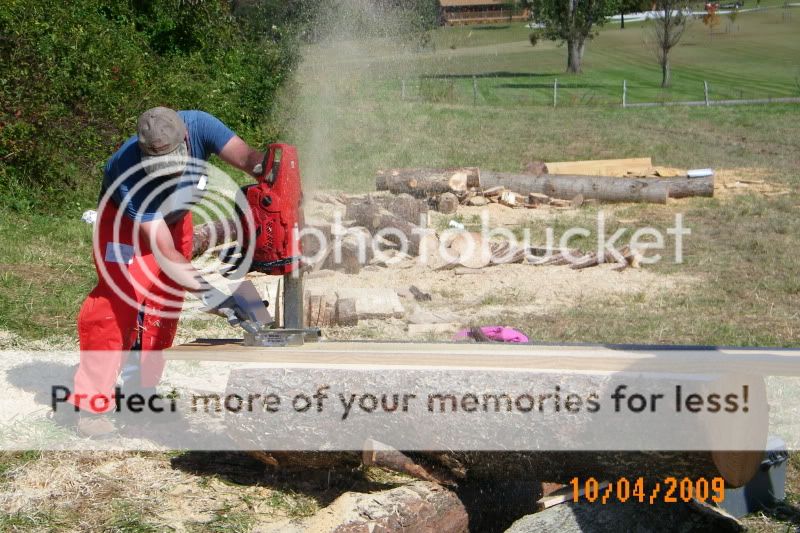SteveG
ArboristSite Lurker
My setup is a Stihl 361 18"bar (.325 63ga) using RC chain. After building a work platform I first milled a cedar that produced a 7"x6"x8' cant, second was a smaller cedar, 5"x5"x8', and a 6"x6"x6' oak. I can certainly understand now why everyone suggests a larger saw. Even with the smaller logs it bogged my CS. The 18" bar, I think, will work fine for the size logs I'll be milling. I am going to order a 22" though. When first starting the milling I was nervous about being so close to the chain. Now that I have 3 under my belt I'm more comfortable with the mini-mill. My first observation concerning the mill itself was "why doesn't Granberg supply a second bracket that attaches to the 2x6 allowing the right side of the mill to ride underneath thereby keeping the mill at 90". I checked TSC yesterday to see if they had some pre-fabbed rails that would fit the mill. They didn't but will try Lowe's or HD. Has anyone tried this?
Yesterday, I dropped an ash, cut 3 lengths of 6' and have them ready to mill. The largest log is 8" diameter at the small end, the two others are 6" or a little less.
Questions to the group.
I just used latex paint to seal the ends. Is there something better?
Would it be better to have the guy that mills for me cut the lumber now or is it okay to let the cants dry under a roof and wait a year or so before having them cut to 2 by?
http://www.arboristsite.com/images/smilies/angryfire.gif
The oak that I got out of the woods had a concrete nail in the trunk. We've lived here 25+ years so someone, years ago, must have posted a sign on that tree.
Yesterday, I dropped an ash, cut 3 lengths of 6' and have them ready to mill. The largest log is 8" diameter at the small end, the two others are 6" or a little less.
Questions to the group.
I just used latex paint to seal the ends. Is there something better?
Would it be better to have the guy that mills for me cut the lumber now or is it okay to let the cants dry under a roof and wait a year or so before having them cut to 2 by?
http://www.arboristsite.com/images/smilies/angryfire.gif
The oak that I got out of the woods had a concrete nail in the trunk. We've lived here 25+ years so someone, years ago, must have posted a sign on that tree.






 I gave up arguing with people who want to use their little saws. Let 'em try it, they'll figure it out for themselves and have fun in the process.
I gave up arguing with people who want to use their little saws. Let 'em try it, they'll figure it out for themselves and have fun in the process.